As an Amazon Associate, we earn from qualifying purchases. We may also earn commissions if you purchase products from other retailers after clicking on a link from our site.
I have been in the sailing community for over 10 years, but I come across new words for the same thing almost every day. Left on a boat is called port, and a rope is a sheet, etc., you know how it goes. When it comes to sails, it is the same; there are many complicated names that often are used interchangeably.
Such is the case with the jib and the genoa, but that ends today! This article is all about explaining the differences between two types of foresails (or headsails).
A jib is a foresail (headsail) that does not extend aft beyond the mast; a genoa, on the other hand, is larger and will overlap the mast and part of the mainsail. A jib sail is used for strong winds and is easy to handle, while the genoa is perfect for downwind sailing in light winds.
Although often mistaken, a jib is not the same as a genoa. So now that we understand the basics, what does this actually mean if we intend to become great sailors?
| Jib | Genoa | |
|---|---|---|
| Size | Smaller than foresail triangle | Larger than foresail triangle |
| Weight | Light | Heavy |
| Ease of handling | Easy | Can be tricky underway |
| Stowing away | Easy | Can be tricky underway |
| Main use | Strong winds (storm jib) | Light winds |
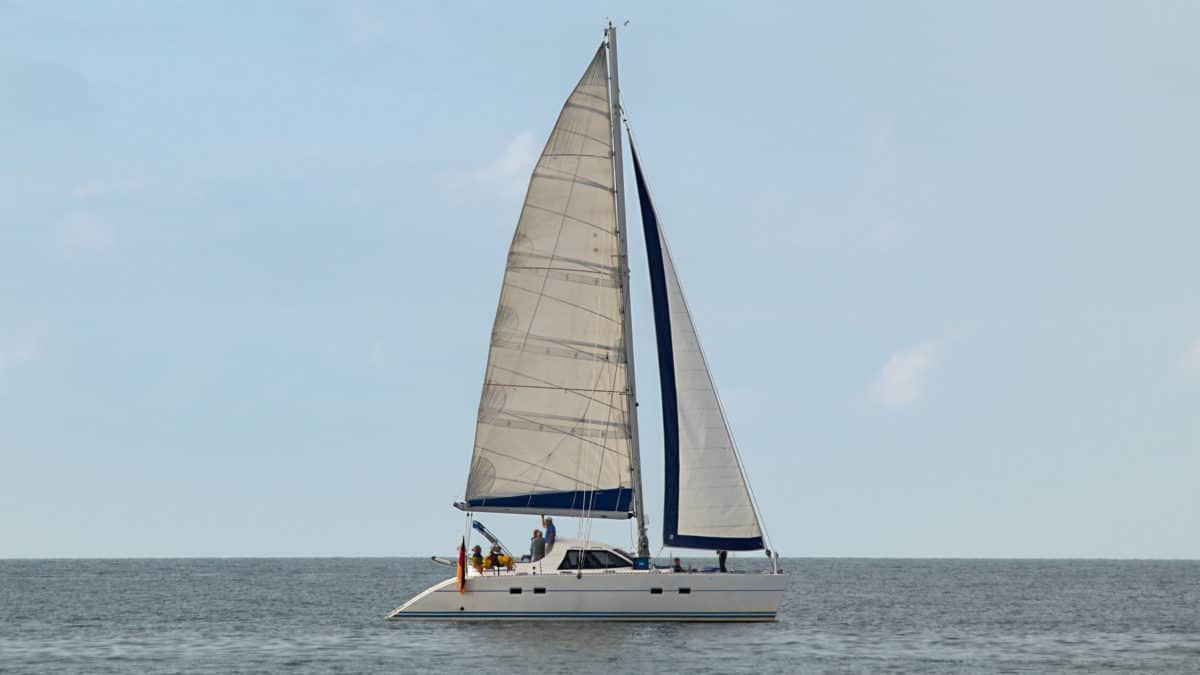
Main Differences Between a Jib and a Genoa Sail
To fully understand what a jib and genoa are we need to first learn some terminology.
- The foresail triangle is the area inside the front stay and the mast when looking at the boat from its side.
- A headsail (or staysail) is the foremost sail that attaches to the forestay and reaches back towards the mast.
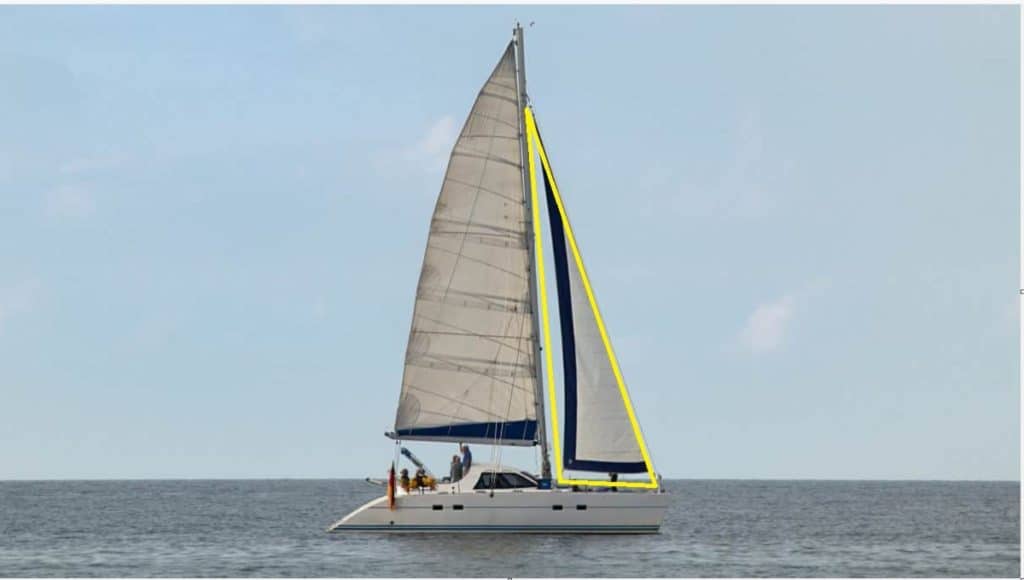
If there is something I don´t fully explain in this article then i suggest you check out my Catamaran Parts and Names Explained post, this will get you up to speed with any weird sailing terminoligy.
Size
When comparing these two sails, the most obvious factor is the size. A jib; as mentioned before, that is so big that its clew (the rear lower corner of the sail) overlaps the mast, is called a genoa. This difference in size results in different sail characteristics, which we will discuss more below.
Looking at the boat from its side, sometimes the genoa is so big you can barely see the mainsail, but on a jib the sail will always fit inside the forestay triangle.
In this picture, you can see the foresail triangle in yellow and the headsail reaching past the mast in red, aka a genoa.
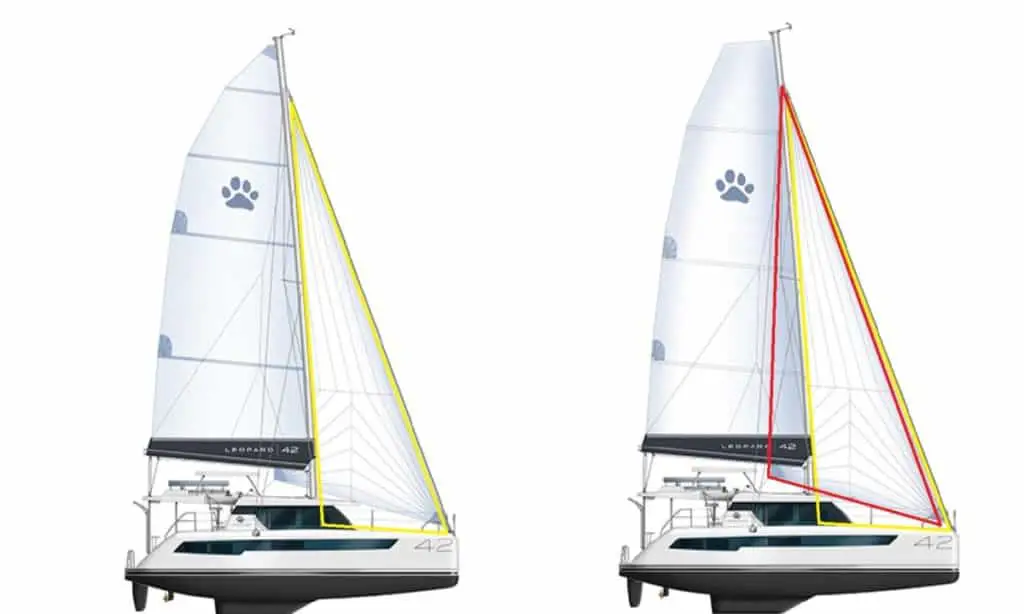
Jibs and genoas are classified by percentages of how much they fill the foresail triangle (the area between forestay, deck, and mast). A jib is only a jib if it stays within the 100% mark (filling, but not exceeding, the foresail triangle space). Anything above that number, 130 %, etc., would be considered a genoa.
The boat-world is full of ambiguity and, of course, so also regarding names of sails; even though this is the most common way to classify sails, some would argue that jibs are up to 130%. And some will use the word jib and genoa interchangeably, but:
As long as you see the foresail triangle and how much space the headsail occupies, you now know what type of sail it is.
Weight
Jibs and genoas can be made in the same materials, so the increased weight from a genoa is mainly due to increased sail area and extra reinforcements. The jib is usually easier to mount because of its low weight and since it is a smaller package to handle.
Ease of Handling
Handling a jib under sail is somewhat more manageable than the larger genoa since the jib does not extend beyond the mast. It cannot get stuck or entangled in a spreader or side stay (which a genoa often does). Tacking is, therefore, much more straightforward and smoother, and perfect for beginners.
If you are using a hank-on system, changing to the larger genoa will also be tougher to hoist, which of course can be mitigated using electric winches.
Potential Longevity
As we discussed above, the smaller jib has fewer contact points with other parts of the boat. Fewer points of contact mean less chafing and potentially longer life; this life expectancy can, of course, be dramatically reduced if we are talking about a storm jib that will only be used in really rough weather.
Stowing Away and Attaching The Headsail
Lower weight and smaller size make stowing easier. Not only will it pack away much more conveniently, but getting the sail from its stowaway position to its “ready to hoist” position is straightforward compared to a huge “I’m walking with arms full.”
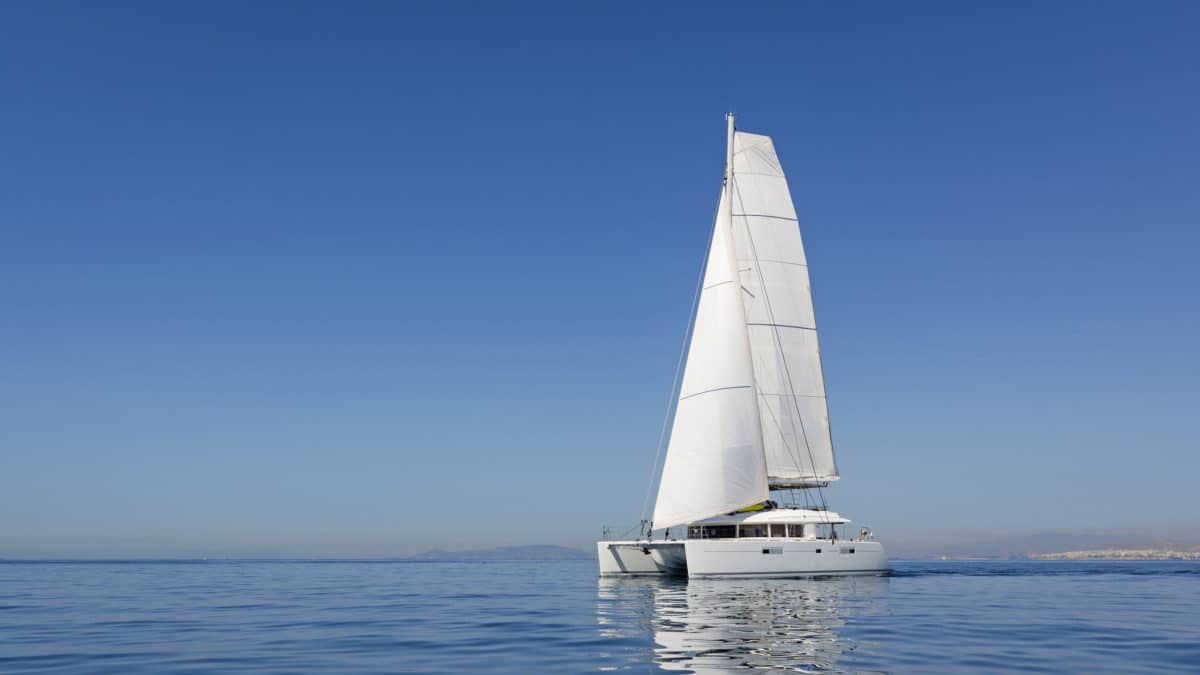
Sailing Basics: When To Use The Genoa
You should use your genoa when winds are low, and you are not getting enough speed out of your jib and mainsail setup.
This is the time to change for the larger and more powerful genoa. The genoa will direct more wind over the mainsail, increasing lift, and boat speed.
Catamaran Freedom: How to sail downwind on a catamaran!
Being overpowered on a monohull is when the heeling angle increases (the boat tilts to its side), but the speed of the boat doesnt. A catamaran acts differently and it doesnt heel, instead, you will have to keep an eye on the wind speed table to make sure you dont risk breaking the mast or capsizing.
If you want to know how and when catamarans actually capsize based on statistics, I suggest you read this post of mine: Why catamarans capsize.
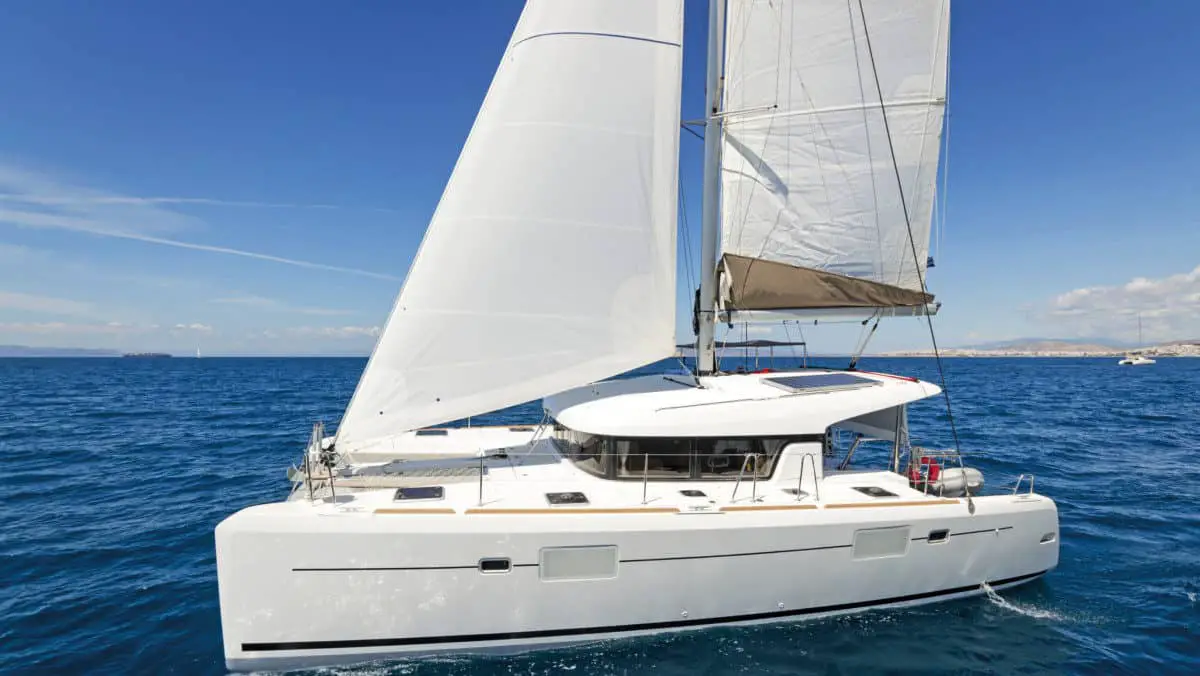
Sailing Basics: When To Use The Jib
The jib’s primary use comes from creating an airfoil and feeding the mainsail with smooth flowing air. This means less turbulence and higher efficiency over the mainsail, even though the jib has a small sail area.
Smaller headsails such as the jib are also used for long-distance passage-making, where the risk of enduring storms for days on end is real. For ocean cruising like this, most boats employ a multi headsail setup where at least one should be a small jib.
There is also a place for the storm jib, something made explicitly for really high winds; these types of staysails can come into two types; either they are of the hank on style, which means you will have to hank off the other headsail before you mount your storm sail.
Or it is of the type that you put over the already furled headsail. Many times the storm jib has a very bright orange color and offers extra strength materials and sowing. The storm jib is even smaller than your already small jib.
Main Similarities Between Genoa And Jib
As we have seen above, there are some differences between the two, mainly in size and therefore also when to use them. But these things aside, there are actually more things in common than what separates them.
Both are headsails or staysails (want to understand catamaran parts? read this) and provide balance and power to the cat.
Often, a headsail can be enough to propel the boat at a pleasant and comfortable speed, but what you will notice is that the ship will have a different feel if sailing without the mainsail. The headsail is also very easy to sail single-handedly; the roller furling system makes adding or retracting sail area very straightforward while still letting the crew rest.
On the other hand, the mainsail usually requires one or more people to get on top of the deck to pack it up and safely store it.
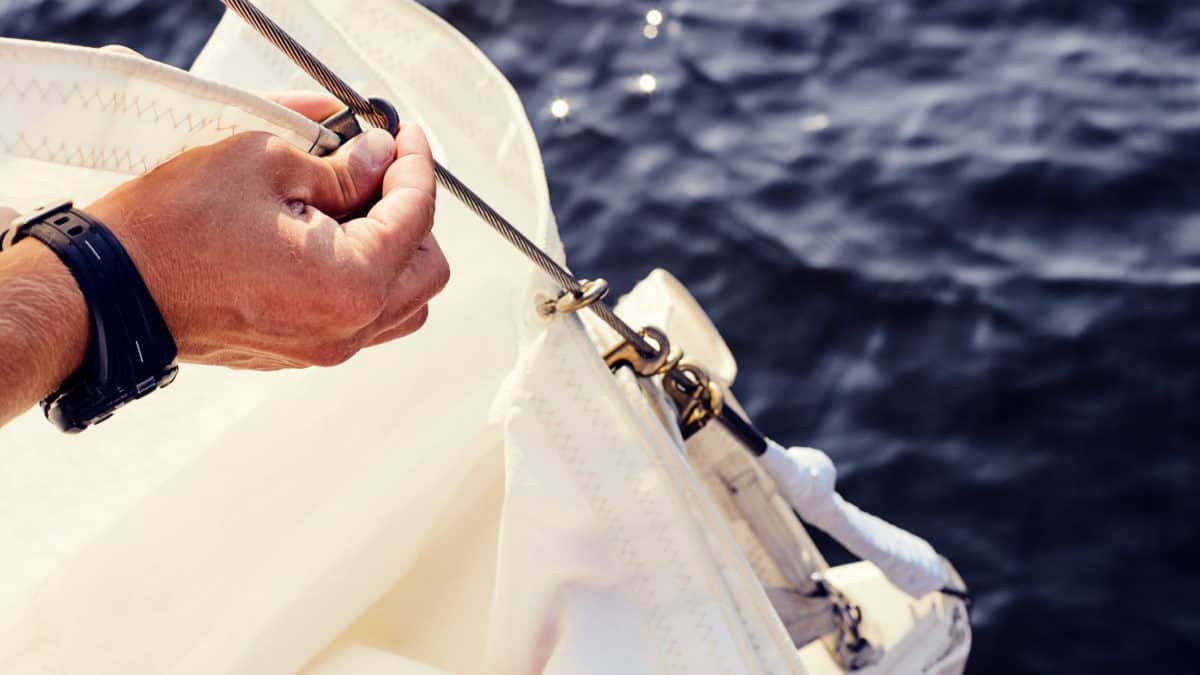
Raising, Reefing, and Furling a Headsail.
The genoa and the jib can be mounted on a furling system that rolls the canvas up onto the forestay when it is not in use. This is the most common setup since it is fast, easy, and very safe.
Both sails can also use the hank-on system (picture above), which is slower and requires more effort by the crew but minimizes the airflow disturbances that a semi-rolled up furling system will induce.
Frequently Asked Questions
What Is The Difference Between a Headsail and a Jib?
This is a common question and hopefully, after reading the above you now know that a Jib is a small type of headsail just as a genoa is a large type of headsail.
Summary
If you remember anything from this article, I would say this should be the thing;
A jib is smaller and does not overlap the mast or mainsail; the genoa is larger and extends past the mast. The Jib is perfect for rough weather and is easier to use, stow, and attach. The Genoa is heavier, better for light wind conditions, and optimized for downwind performance!
